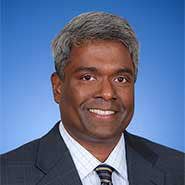NetApp Fiscal Q2 Revenue, Earnings Slip As Transition From Legacy Tech Accelerates

NetApp on Wednesday reported a fall in revenue and earnings for its second fiscal quarter of 2016, beating expectations while causing some investor confusion.
The news was good for the channel, however, as partners continued to handle most of NetApp's sales as it focuses more on its newer clustered and flash storage technology and away from its traditional solutions.
NetApp reported revenue for the quarter of $1.45 billion, down about 6 percent from the $1.54 billion in revenue the company reported for the same quarter last year.
[Related: CRN Exclusive: NetApp CEO Kurian On VMware Relationship In A New Dell-EMC World]
The Sunnyvale, Calif.-based storage vendor also reported income for the quarter of $114 million, or 39 cents per share, on a GAAP basis, down from last year's $160 million, or 49 cents per share. On a non-GAAP basis, income for the quarter was $181 million, or 61 cents per share, down from $226 million, or 70 cents a share.
According to Seeking Alpha, the results were better than expected. Analysts had been expecting non-GAAP earnings per share of 57 cents. Revenue for the quarter beat expectations by $20 million, Seeking Alpha reported.
Investors seemed to have trouble understanding what the results meant. NetApp shares were down most of the day, closing at $31.30 per share, but spiked to $31.72 per share in after-hours trading after the financials were released. They then quickly dropped to $30 per share, and seesawed around the closing price through much of the evening.
NetApp CEO George Kurian said during Wednesday's quarterly financial analyst conference call that NetApp has been making progress as expected.
"We continued to make progress as we pivot to growing parts of the market: software-defined, flash and scale-out," Kurian said.
NetApp is in the midst of a transformation from a focus on traditional storage solutions, particularly its earlier 7-Mode architecture, to new architectures including Clustered Data Ontap, hybrid clouds and all-flash storage.
About 30 percent of NetApp FAS sales were 7-Mode solutions in the second fiscal quarter, down from 65 percent a year ago, Kurian said, making the quarter the first in which 7-Mode solution sales did not grow. About 70 percent of its FAS solutions were deployed with Clustered Data Ontap, he said.
As a result, NetApp has to walk a fine line between supporting its older architectures and continuing its transformation to the faster-growing parts of the market, Kurian said.
"We must be more efficient in the part of the business that is not growing in order to deliver better return to shareholders and let us invest in new technologies," he said.
Kurian thanked the channel for its help in transitioning customers to Clustered Data Ontap. "We saw a strong uptake in the second quarter, almost all of which happened through our channel partners," he said.
Indirect channels accounted for about 77 percent of NetApp sales during the quarter, the company reported.
NetApp also saw strength in its all-flash storage array sales, with shipments up 485 percent in the second fiscal quarter over last year's same quarter. It was the sixth consecutive quarter of growth, Kurian said.
NetApp also reported that shipments of its all-flash FAS storage arrays grew 246 percent quarter to quarter, while total flash capacity grew 80 percent during the same period.
Hybrid cloud sales of NetApp technology also grew fast during the quarter, although it is not yet a material part of the business, Kurian said.
Sales of the FlexPod architecture, developed jointly by NetApp and Cisco, have continued to grow, with joint sales over the past five years now reaching $5.6 billion via more than 1,100 channel partners, Kurian said.
In the end, NetApp's success will continue to come from the fact that the company is the only storage vendor that can help customers scale across multiple architectures including the cloud, Kurian said.
"There is growth in this industry," he said. "We feel we have the strategy to capture growth in the market over the long term."
When asked by a financial analyst during the conference call about how Dell's planned acquisition of NetApp archrival EMC will impact NetApp, Kurian shrugged off any concerns, saying the merger is not about the cloud or software-defined data centers but is instead about building efficiency in the traditional hardware business.
"The Dell-EMC transaction is yesterday's solution to tomorrow's problem," he said.
Looking forward, NetApp said it expects third fiscal quarter 2016 revenue of $1.4 billion to $1.5 billion, down from the $1.55 billion the company reported in the third fiscal quarter of 2015. The company expects 47 cents to 52 cents per share on a GAAP basis, down from 56 cents per share last year, as well as 66 cents to 71 cents per share on a non-GAAP basis, down from last year's 75 cents per share.
PUBLISHED NOV. 18, 2015